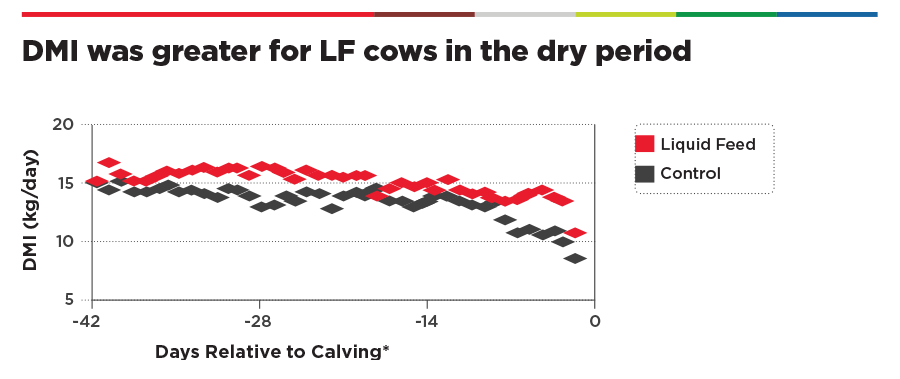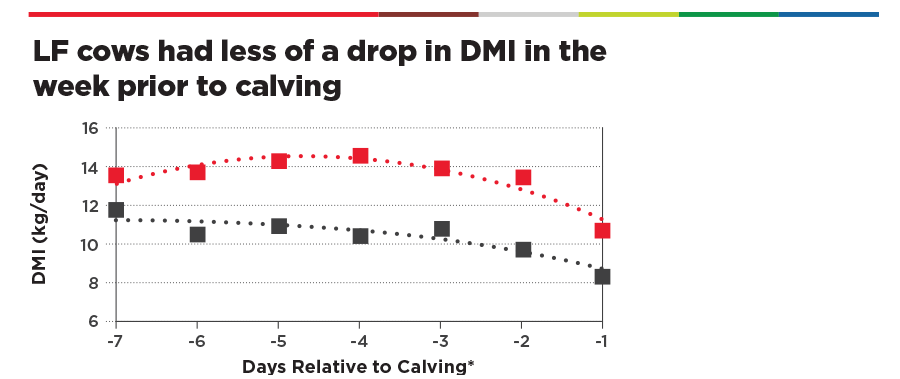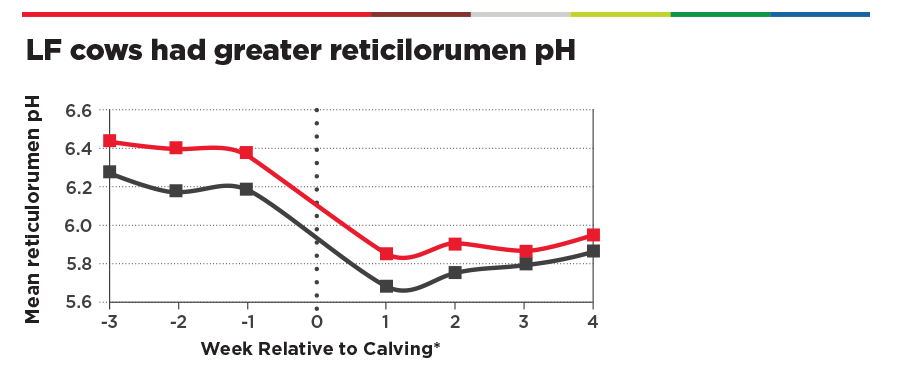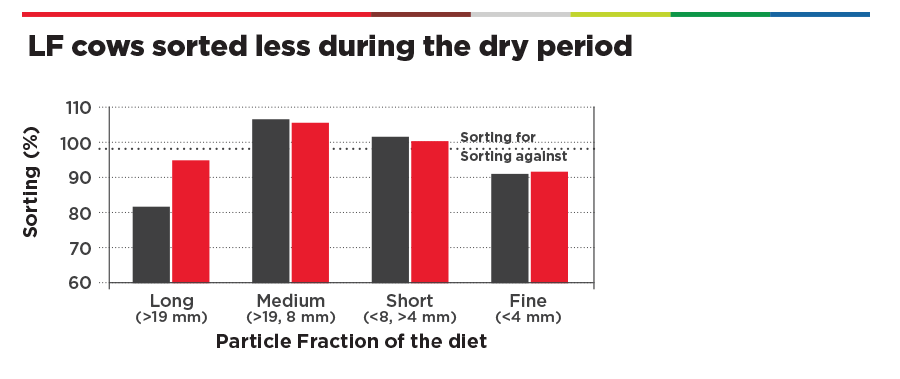A recent study done at the University of Guelph demonstrated that adding molasses-based liquid feed to dry cow diets improves feed intake before calving, and stabilizes reticulorumen pH across the transition period.
Why feed molasses?
- Incidence of ketosis in early lactation is related to the degree of negative energy balance (NEB) experienced at that time
- How we feed cows in the weeks leading up to calving may play a significant role in the severity of NEB experienced after calving
- Controlled-energy dry cow diets are commonly fed, however, these diets are often high in straw which has low digestibility and is easily sorted
- Liquid molasses is highly palatable and known to encourage feed intake, while decreasing feed sorting
Research Questions
Does supplementing a high-straw dry cow diet with a molasses based liquid feed...
- Improve dry matter intake (DMI) pre-calving?
- Maintain dry matter intake post-calving?
- Improve rumen function?
- Discourage feed sorting?
University of Guelph Research Trial
Studied 40 Holstein dairy cows fed 1 of 2 dry cow diets, for a 6 week dry period:
20 Control dry cows (C) No molasses addition to TMR
vs
20 Liquid Feed (LF) dry cows 2.0 kg/cow/d as fed (1.0 kg/cow/d DM basis) of molasses-based liquid feed added to the TMR
Diets contained, on a DM basis: corn silage (C=41%, LF= 39%), wheat straw (C=36%, LF= 33%), and dry cow supplement (C=23%, LF= 22%).




In Summary, adding liquid molasses to a high straw dry cow diet:
- Improved DMI across the dry period
- Reduced feed sorting during the dry period
- Stabilized reticulorumen pH around the time of calving
For access to full article, view links below
https://www.ncbi.nlm.nih.gov/pubmed/32278564
http://dx.doi.org/10.3168/jds.2019-18085
Havekes, C., T. F. Duffield, A. J. Carpenter, and T. J. DeVries. 2020. Impact of molasses-based liquid feed supplementation to a high-straw dry cow diet on feed intake, health, and performance of dairy cows across the transition period. J. Dairy Sci. 103:5070-5089. https://doi.org/10.3168/jds.2019-18085




